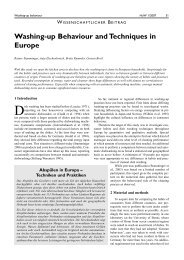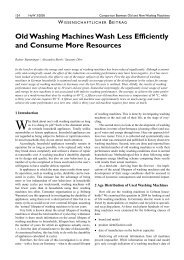Development of a novel mechatronic system for mechanical weed ...
Development of a novel mechatronic system for mechanical weed ...
Development of a novel mechatronic system for mechanical weed ...
Create successful ePaper yourself
Turn your PDF publications into a flip-book with our unique Google optimized e-Paper software.
Materials and methods<br />
change its input to the motor to cause the desired motion. If the servo motor in<br />
speed-control mode is trying to achieve a speed <strong>of</strong> 1000 rpm but is only running<br />
at 900 rpm, the feedback control will detect the problem and in<strong>for</strong>m the<br />
positioning controller to provide more power until the detected speed reaches<br />
1000 rpm (Baldor Electric company 2007). Closed loop <strong>system</strong>s are required <strong>for</strong><br />
applications whose motion pr<strong>of</strong>ile is complex, when high resolution and<br />
accuracy are necessary, when the rotation speed ranges from very slow to very<br />
high and when high torques are demanded in small package sizes.<br />
The actual feedback device is the last important part <strong>of</strong> a servo device.<br />
Feedback devices included analog and digital tachometers and resolvers. An<br />
analog tachometer is essentially a small generator, usually hard-wired to the<br />
output shaft <strong>of</strong> the motor and using the resulting rotational speed to output a<br />
variable voltage which varies linearly with speed. While they are cheap and<br />
simple, analog tachometers always introduce some AC-type ripple into the<br />
output signal because they are not ideal devices and subject to design and<br />
manufacturing tolerances. Digital tachometers operate either optically with<br />
photoelectric detection or with contact through a brush assembly. Two types<br />
exist: absolute encoders which assign a discrete address to each position<br />
through 360° and incremental encoders which simply emit electrical pulses at<br />
defined intervals which must then be counted to obtain position and distance<br />
(Baldor Electric company 2007).<br />
A concept <strong>of</strong> a servo <strong>system</strong> is illustrated in the Figure 4.5.<br />
50<br />
External<br />
controller<br />
+<br />
Servo<br />
amplifier<br />
Servo<br />
motor<br />
Feedback loop<br />
Encoder<br />
Figure 4.5 Concept <strong>of</strong> a servo <strong>system</strong> in a closed loop<br />
Controlled<br />
<strong>system</strong> (load)





